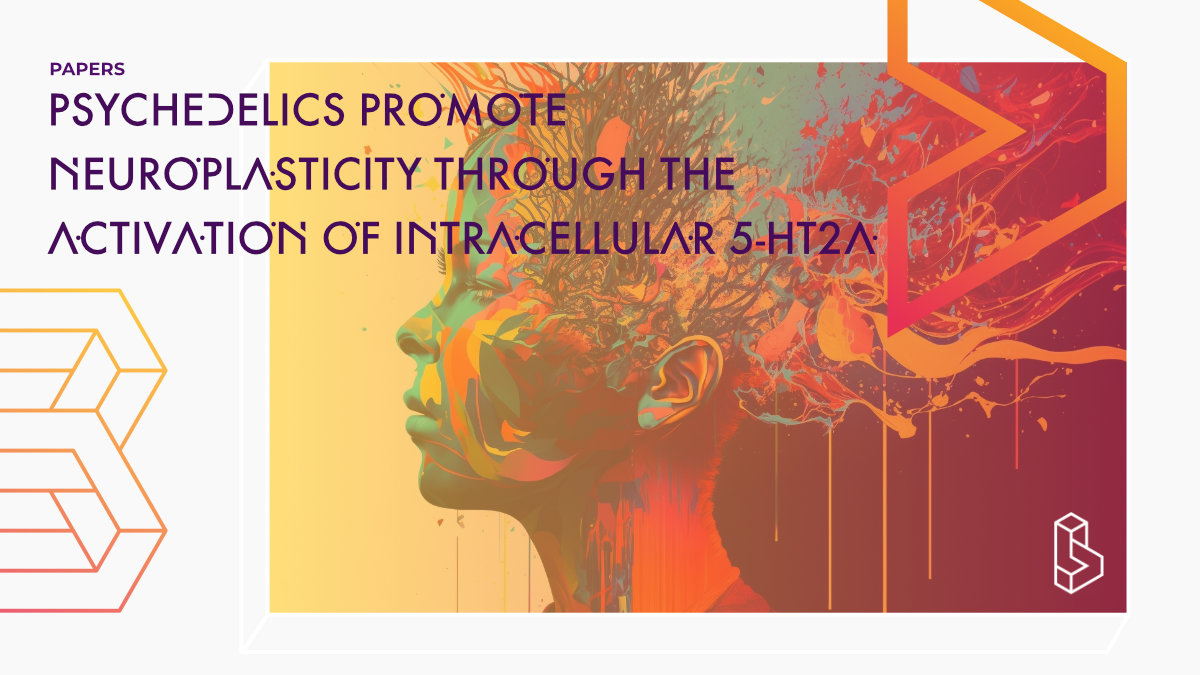This series of experiments in mice (in vivo) and human cells (in vitro) found that a specific type of receptor called intracellular serotonin 2A receptor is partially responsible for neuroplasticity (growth-promoting effect). This suggests that intracellular, versus that on the surface of a neuron, serotonin 2A receptors could be a target for developing new therapies and that there is still much to be learned about how psychedelics (and other drugs) work in the brain.
Abstract
“Decreased dendritic spine density in the cortex is a hallmark of several neuropsychiatric diseases, and the ability to promote cortical neuron growth has been hypothesized to underlie the rapid and sustained therapeutic effects of psychedelics. Activation of 5-hydroxytryptamine (serotonin) 2A receptors (5-HT2ARs) is essential for psychedelic-induced cortical plasticity, but it is currently unclear why some 5-HT2AR agonists promote neuroplasticity, whereas others do not. We used molecular and genetic tools to demonstrate that intracellular 5-HT2ARs mediate the plasticity-promoting properties of psychedelics; these results explain why serotonin does not engage similar plasticity mechanisms. This work emphasizes the role of location bias in 5-HT2AR signaling, identifies intracellular 5-HT2ARs as a therapeutic target, and raises the intriguing possibility that serotonin might not be the endogenous ligand for intracellular 5-HT2ARs in the cortex.“
Authors: Maxemiliano V. Vargas, Lee E. Dunlap, Chunyang Dong, Samuel J. Carter, Robert J. Tombari, Shekib A. Jami, Lindsay P. Cameron, Seona D. Patel, Joseph J. Hennessey, Hannah N. Saeger, John D. McCorvy, John A. Gray, Lin Tian & David E. Olson
Summary of Psychedelics promote neuroplasticity through the activation of intracellular 5-HT2A receptors
Psychedelics are 5-hydroxytryptamine (2A) receptor (5-HT2AR) agonists that can lead to profound changes in perception, cognition, and mood. Recent evidence suggests that 5-MeO-DMT increases spine density in both male and female animals and that 5-HT2AR activation is necessary for sustained increases in both frequency and amplitude of spontaneous excitatory postsynaptic currents.
Find this paper
Psychedelics promote neuroplasticity through the activation of intracellular 5-HT2A receptors
https://doi.org/10.1126/science.adf0435
Paywall | Google Scholar | Backup | 🕊
Study details
Authors
Authors associated with this publication with profiles on Blossom
David OlsonDavid Olson is the Chief Innovation Officer and Head of the Scientific Advisory Board at Delix Therapeutics. He is also an Associate Professor at UC Davis and his lab investigates the psychoplastogenic properties of psychedelic substances and other alkaloids, with respect to their ability to treat a wide variety of neuropsychiatric diseases, including depression, anxiety disorders, and addiction, by increasing neuroplasticity.

